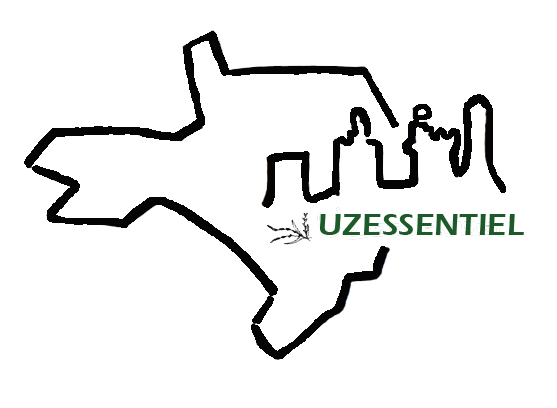Visit to the archaeological site of Ambrussum
Let's set off to discover the archaeological site of Ambrussum, not far from the commune of Villetelle.

After first visiting the site museum, you can reach the Roman bridge (1st century AD), which stands on the via Domitia linking Nîmes (Nemausus) to Narbonne (Narbona) and facilitated the economic and social life of Ambrussum.
|
Did you know that...: It was "in the middle of hills carpeted with holm oaks, in the countryside around Loupian, in the Hérault department, that INRAP archaeologists unearthed one of the longest known stretches of the Via Domitia, the famous ancient road that crossed southern Gaul, from the Rhône to the Pyrenees (article by Marie-Amélie Carpio, National Geographic, 19/07/22 www.nationalgeographic.fr/)
|
The original wooden structure was replaced by a solid stone bridge, around 150 m long and made up of 11 arches. Today only one remains, 10 m wide and 9 m high, which gives a good idea of what the building looked like in ancient times.

The roadhouse , one of the first stops on the tour after the museum, used the access provided by the bridge to boost its activities, such as the cursus publicus, the imperial postal service mentioned on the Peutinger table, a 13th-century copy of a Roman map.


The archaeological site on the right bank of the Vidourle, a little higher up, was already occupied in the Neolithic period and saw the arrival of the Arécomiques Volcanic Celts from the 4th century onwards. It was from this period that the oppidum, which extends over more than 5 hectares, and the powerful ramparts were built, some of which can still be seen today by following them on foot. With the arrival of the Romans in 125 BC, Ambrussum was transformed even further, welcoming forums, porticoes and villas...

Gradually abandoned, Ambrussum "fell into oblivion in the 4th century". Rediscovered in the early 20th century, the site started to be excavated between 1910 and 1014 by archaeologist, ethnographer and writer Emile Marignan (1847/1937). From 1964 onwards, it was the turn of archaeologist Marc Fenouillet, followed in 1967 by Jean-Luc Fiches (1947/2012), an archaeologist specialising in the Gallo-Roman world and honorary director of research at the CNRS, who undertook excavations in 1986, 1989, 2007 and 2009, notably in "the lower quarter of Ambrussum, the emblematic site of his career" (ager.hypotheses.org/59). 3 Roman domus, a civil basilica, a paved road (excavated in 1975) and the roadhouse (excavated between 1980 and 1985) were then unearthed...
Today, excavation campaigns are still carried out on a regular basis, with over 800 international volunteers who came working there since 1968..
Source: Ambrussum website (thanks for the documentation provided).
The right address: The Ambrussum site, Chemin d'Ambrussum, 34400 Villetelle, is permanently open to the public. The Museum is open from February to May from 2pm to 5.30pm, in June and September from 10am to 12.30pm and 2pm to 5.30pm, in July and August from 10am to 12.30pm and 2.30pm to 7pm.





